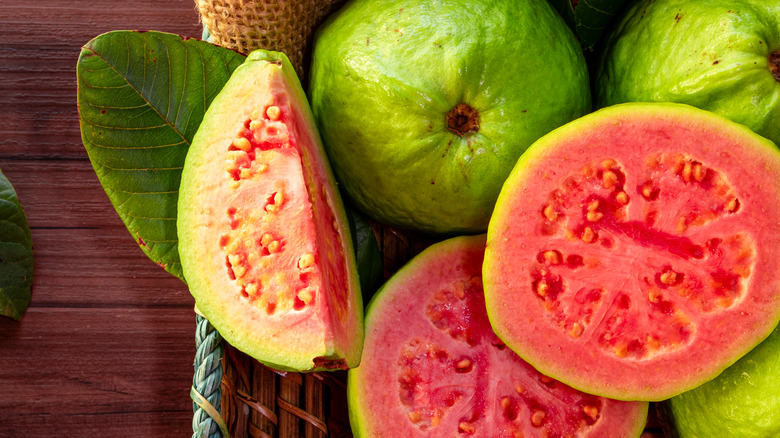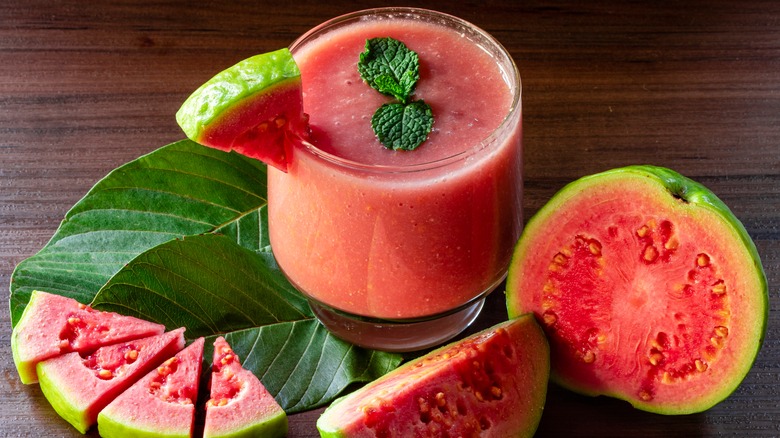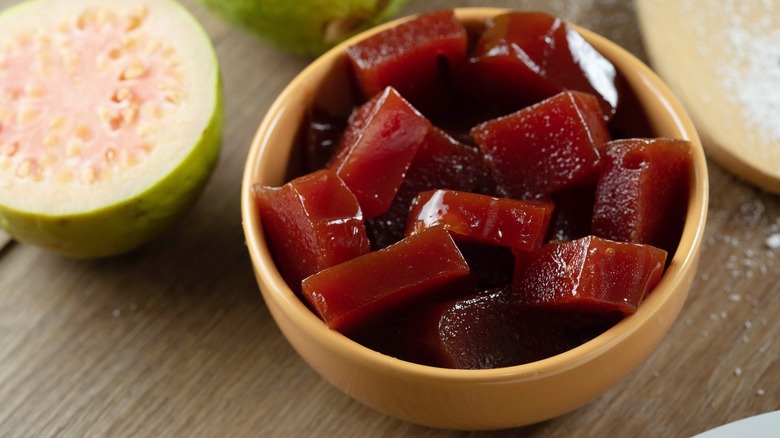How To Eat Guava, And Why You Should
There are two kinds of fruits: those that you couldn't imagine ever running out of and others that you regard with a bit of reservation. Apples, bananas, and berries may fall in the former. But guavas, for many, belong securely in the latter category.
How should you pick and prep guava? Can you eat the flesh, skin, and seeds? Is it even important to eat the fruit? These are all entirely valid questions that may pop into one's mind when looking at the juicy pink and green colored fruit, which may be why guavas are most commonly consumed in the form of packaged juices, smoothies, and cocktails where the fruit is prepped by someone else — preferably someone who knows their way around a guava.
Don't be befuddled by a guava's appearance, however — it's an easy fruit to prep and eat. It's so easy, in fact, that you can practically eat a guava as-is. Besides, guavas have a host of health benefits, including high levels of dietary fiber, vitamin C, and antioxidants, not to mention the sweet but acidic taste that's entirely unique to them — all reasons to consider adding guava to your everyday diet beyond the odd juice.
Guava packs a ton of nutrients into each bite
Guava has an impressive nutritional value, which is reason alone to start eating the tropical fruit. According to the USDA, one cup of guava has 8.9 grams of fiber which is nearly a fourth of the daily recommended intake, along with 376 milligrams of vitamin C, which is well over the 75 milligrams and 90 milligrams, respectively, of the daily recommended intakes for women and men over 19.
While guava leaves are already used for medicinal purposes, even the fruits themselves have several health benefits. Studies have linked guavas with lower blood pressure and higher HDL or good cholesterol. The high fiber content makes guava an excellent fruit for a constipated digestive system or when following a weight-loss diet. Plus, guava is one of the best sources of vitamin C which comes with a host of benefits. It can help support the immune system, ease the duration of common colds, and fight infection-causing bacteria.
With the wide array of guava's health benefits, the fact that the fruit has an exquisite flavor is only a bonus. Depending on the variety of a particular guava, its flavor can range from strong, sweet, and lemon-like to juicy with only a hint of sweetness. In general, though, guavas tend to have a flavor that's somewhere between a pineapple, strawberry, and passionfruit without being too sickly sweet.
Guava is easy to eat
Guava is as easy a fruit to eat as they come. Eating it can be as simple as rinsing the fruit and biting into it — guava's skin and seeds are both perfectly edible. Considering the fact that the skin alone has more vitamin C than the flesh of an orange, it may be more advisable to eat guava with its rind on.
Alternatively, you could also scoop the flesh from its skin and eat guava without its rind and seeds. These raw pieces can be added to smoothies and juices, as well as to salads. Guava also takes well to cooked recipes. The high-pectin fruit makes excellent jams, jellies, marmalades, and pie fillings, and its sweet flavor is a welcome addition to cheese platters and fruity desserts.
Not only can guava be eaten cooked or uncooked and with or without its skin, but it's also one of the rarer fruit that plays on both sides of the flavor field. That is, guava can be paired with both sweet and savory flavors. Its acidity can lighten sauces meant for rich meats, the fruit takes well to spicy margaritas, and guavas doused in a splash of lime with salt and chili powder are a popular snack in India. There's really no end to what you can do.



